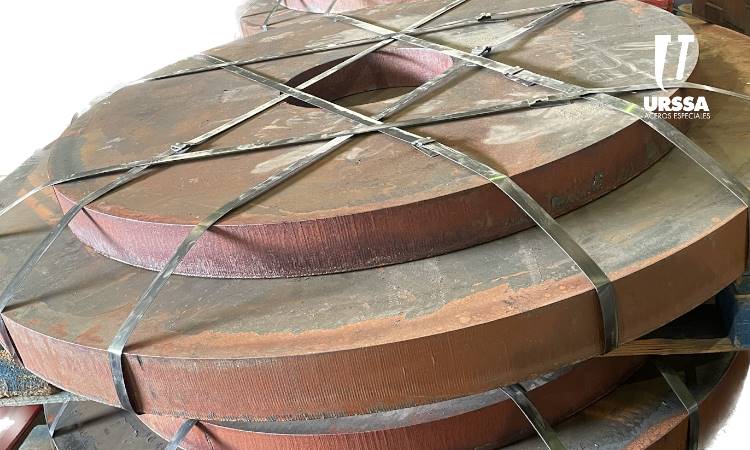
Distensioned steel
Distensioned C-45 steel belongs to the category of carbon steels, also known as construction steels, known for their high strength and hardness. Its typical chemical composition includes approximately 0.45% carbon, which gives it its name, and minor amounts of manganese, silicon, phosphorus, and sulfur. This combination makes it suitable for applications requiring high wear resistance and good surface hardness.
Fabrication process
The manufacturing process of relaxed C-45 steel includes several key stages that we can summarize as:
1. Foundry and Forming:
1.The process begins with the melting of raw materials in a furnace. Molten steel is poured into molds to form bars, plates or specific shapes depending on the desired application.
Heat Treatment:
- Quenching: C-45 steel undergoes a quenching process that involves heating the material to a high temperature (typically between 820-860°C) and then rapidly cooling it in oil or water. This process increases the hardness and resistance of the steel.
- Tempering: Subsequently, the steel is heated again to a lower temperature (between 540-680°C) and cooled in air. This reduces the fragility induced by the temple.
3. Distended:
The destressing process involves heating the steel to a moderate temperature (usually around 600°C) and holding it at that temperature for a specified period before slowly cooling it. This treatment relieves internal stresses generated during the forming and quenching processes, improving dimensional stability and reducing the risk of deformation during use.
Uses of Distensioned C-45 Steel
Stressed C-45 steel is used in a variety of industrial applications where a combination of hardness, strength and dimensional stability is required. Some of its most common uses include:
- Machinery components and cutting tools: Due to its high wear resistance and hardness, C-45 steel is widely used in the manufacture of gears, shafts and other mechanical components that must withstand high loads and friction as well as cutting tools such as punches or dies.
- Automotive parts: It is used in the production of automobile parts, such as crankshafts and connecting rods, which require high strength and durability.
- Construction Equipment: Construction machinery components, such as excavator arms and crane parts, benefit from the robustness and strength of relaxed C-45 steel.
Conclusion
C-45 stressed steel is a versatile and robust material that is used in a wide range of industrial applications due to its properties improved mechanics. The stretching process is crucial to optimize these properties, ensuring that the material maintains its dimensional stability and strength during use under demanding conditions. Its combination of toughness, strength and durability makes it a preferred choice in sectors ranging from automotive to heavy machinery and tool manufacturing.
